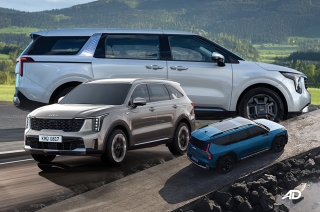
Fluctuating gas prices are nothing new. Many of us have a weekly habit of keeping informed on the latest oil price drops or surges. We complain when prices go up and celebrate when they plummet. It's a fact of modern life.
That said, something seems different with the recent oil price hikes. For the past year, consumers have been facing price shocks that have not been seen in years. It's not just in the Philippines either. Many parts of the world are experiencing an energy crisis that can no longer be ignored. So, we're here to speculate on why gas prices have been skyrocketing in 2021.
The dark cloud of a global energy crisis

The world is slowly but surely turning to alternative and renewable energy sources in the advent of worsening climate change. Oil investments have been drying up in recent years. That money is instead going to the renewable energy sector, a relatively immature industry.
As it stands, the world can't run on renewables alone. We're still not out of the woods with our reliance on fossil fuels. Coal, crude oil, and natural gases are still necessary for the kind of lives we live. That will continue for the near future, at least until we transition to cleaner energy sources. As of 2019, only 26% of the world's energy came from renewables.
Hybrid gasoline-electric vehicles like the Toyota Corolla Cross and Mitsubishi Outlander PHEV have steadily gained our collective attention. All-electric vehicles, like the Teslas and Ford F150 Lightnings of the world, are also in vogue. These models help the cause, but internal combustion-powered cars still represent the lion's share of vehicles on the road today.
Right now, with how much we still depend on oil, an energy crunch in a massive country can send gas prices through the roof. Paired with diminishing oil investments, it can be a recipe for disaster. That's what's happening now in China, which is heavily dependent on coal, but it doesn't stop there. Other large markets like the UK, Brazil, India, and Germany are also experiencing energy shortages. This energy crunch has spurred many countries to stockpile oil and natural gas reserves, contributing to inflation and rising prices.
Pandemic aftershocks

The COVID-19 pandemic is far from over. Since it brought us to our knees in mid-2020, the world has changed, almost unrecognizably so. By some indications, the virus that causes the disease may not go away completely. While the worst could be behind us, its after-effects will continue to be felt by the world for years to come.
One avenue where the pandemic hit particularly hard is the oil industry. As economies reopen across the globe, demand for fossil fuels will continue to grow. The economics of it all is simple. With high demand, there comes a mad scramble for supply. That's something we are draining very quickly, and it's glaringly obvious. Currently hovering at around $80 per barrel in the U.S., the price of crude oil is the highest it's been in eight years.
When will it end?

There is still much uncertainty surrounding short-term gas prices. It might get worse before it gets better. In the Philippines, prices have been soaring steadily, at times for months on end. There is no quick solution to rising oil and gas prices. Solving the COVID-19 pandemic and the global energy crisis will require the best minds in the world to be put to work.
Fortunately, some experts have predicted the end of rising oil prices in 2022. Whether that comes to fruition will depend on many factors, some of which may not be readily visible today. For now, we have to weather the storm and hold the line until things take a turn for the better.
Latest Features
-
An all-electric future: The Porsche Macan Electric / Featured Article
Porsche’s Macan goes all-electric; it’s a new beast with an electrified heart, yet unmistakably Porsche in performance and spirit.
-
Which Kia should I buy? / Featured Article
We’re here to help you decide which Kia vehicle is best for you, whether it’s a sedan, crossover, or minivan.
-
Why Lynk & Co is a good option for luxury car buyers / Featured Article
Lynk & Co offers premium value for those exploring the luxury market.
Popular Articles
-
Electric Vehicles in the Philippines for under P1 million
Jerome Tresvalles · Aug 19, 2025
-
Top 3 Cars For Every Lifestyle—What Cars Are Right For You? | Behind a Desk
Caco Tirona · Apr 24, 2024
-
5 Tips to Maximize Fuel Efficiency
Jerome Tresvalles · Sep 09, 2024
-
Five driving habits that are draining your fuel tank
Jerome Tresvalles · Jun 24, 2025
-
Can engine braking harm your engine?
Jerome Tresvalles · Sep 11, 2025
-
Do electric cars even need maintenance?
Jerome Tresvalles · Oct 23, 2024
-
Best vehicles for an active outdoor lifestyle
Shaynah Miranda · Jul 25, 2024
-
How to drive different types of vehicle transmissions
May 23, 2024
-
5 easy ways to keep your car interior clean
Allysa Mae Zulueta · Nov 15, 2021
-
How to survive Metro Manila traffic
Earl Lee · Aug 16, 2022



